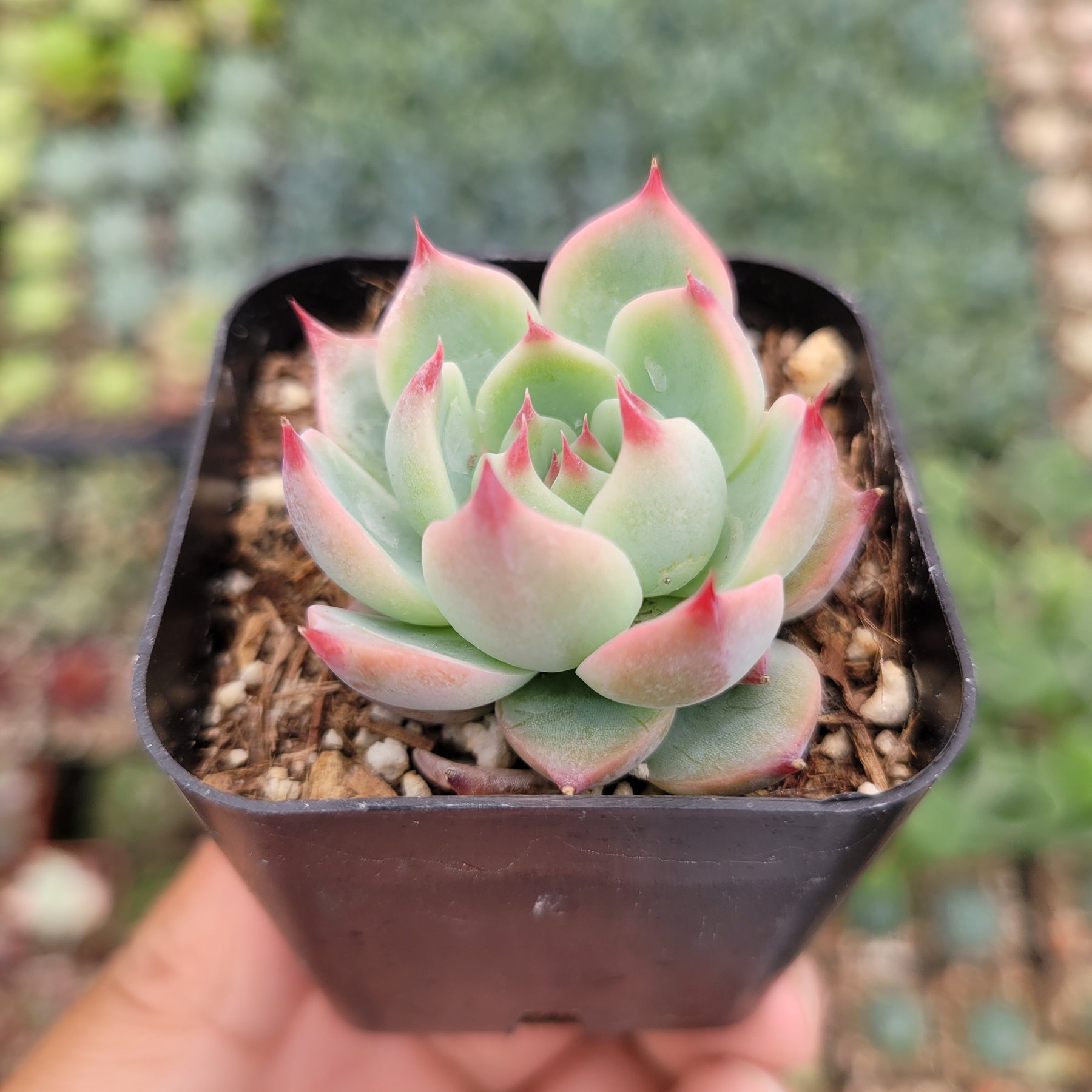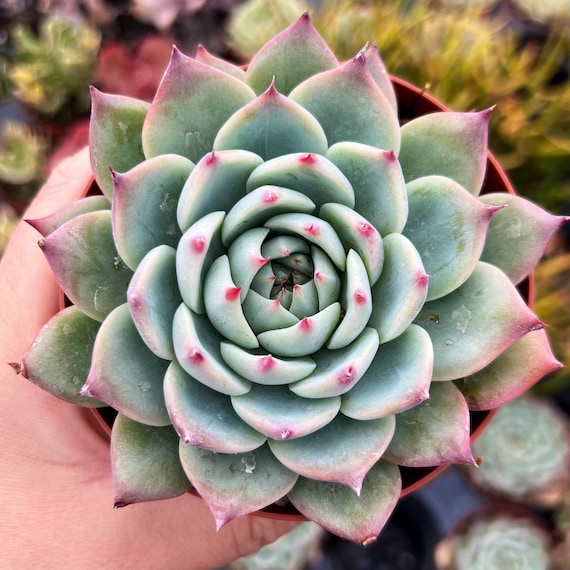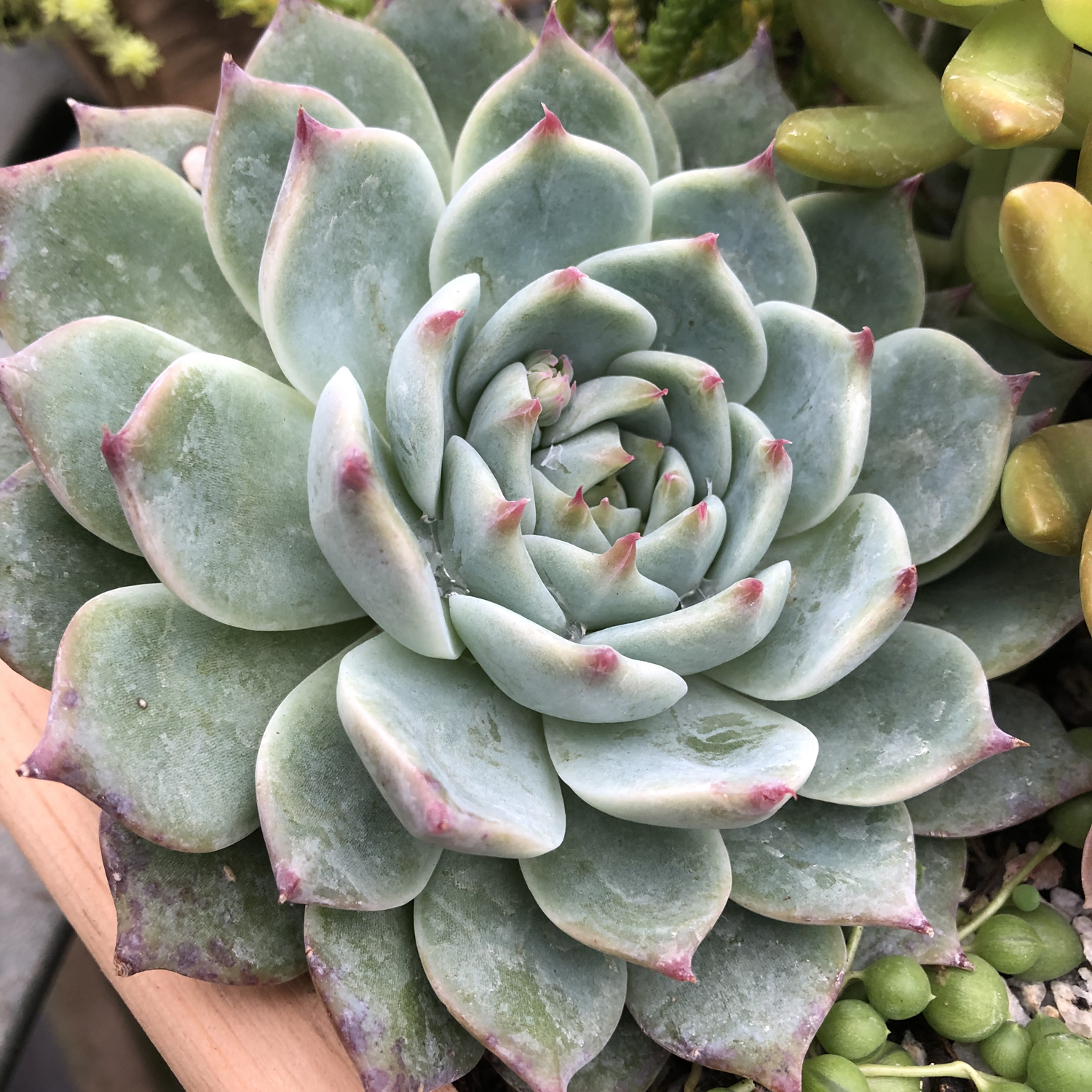This succulent is perfect for those new to gardening. It is a clumping plant with silvery-green leaves with rosy tips that grows easily and can form a mound. In the spring, look for yellow blooms on the plant.
Table of Contents
Care and Propagation Information
Echeveria colorata is an ideal choice for rock gardens and hanging baskets. The succulent grows outward in clusters and can reach a diameter of 8 inches (20 cm) when mature. The rosette can expand to up to 16 inches (40 cm).
Watering
Echeveria colorata requires a typical amount of water for a succulent. The recommended approach is to “soak and dry”: water the soil until it is saturated, and then wait for it to dry out completely before watering again.
Where to Plant
If you live in an area with temperatures lower than 20° F (-6.7° C), it’s best to keep Echeveria colorata in a pot that you can bring indoors. This succulent prefers being in full or partial sunlight.
How to Propagate Echeveria colorata
This species of Echeveria can be grown from stem cuttings, leaves, and offsets.
Cuttings
To propagate Echeveria colorata from cuttings, utilize a clean, sharp knife or scissors. Take a stem from the main plant, and let it form a scab before planting it in soil that drains well. Make sure to water it only after the soil has completely dried out.
Leaves
To propagate Echeveria colorata, carefully detach a leaf from the mother plant by twisting it off the stem. Make sure that none of the leaf remains attached, as this could reduce the chances of success.
Let the leaf dry for a few days so that the cut end seals up, then place it in a pot with well-draining soil. Water the soil only after it is completely dry.
Offsets
Echeveria colorata will create new plants around the base of the original. To propagate them, pull the offsets away and let them sit for a period of one to two days before planting them somewhere else.
Care and Propagation Information
General Care for Echeveria colorata
Watering
Echeveria colorata requires a typical amount of water for a succulent. The recommended approach is to “soak and dry”: water the soil until it is saturated, and then wait for it to dry out completely before watering again.
Where to Plant
If you live in an area with temperatures lower than 20° F (-6.7° C), it’s best to keep Echeveria colorata in a pot that you can bring indoors. This succulent prefers being in full or partial sunlight.
How to Propagate Echeveria colorata
This species of Echeveria can be grown from stem cuttings, leaves, and offsets.
Cuttings
To propagate Echeveria colorata from cuttings, utilize a clean, sharp knife or scissors. Take a stem from the main plant, and let it form a scab before planting it in soil that drains well. Make sure to water it only after the soil has completely dried out.
Leaves
To propagate Echeveria colorata, carefully detach a leaf from the mother plant by twisting it off the stem. Make sure that none of the leaf remains attached, as this could reduce the chances of success.
Let the leaf dry for a few days so that the cut end seals up, then place it in a pot with well-draining soil. Water the soil only after it is completely dry.
Offsets
Echeveria colorata will create new plants around the base of the original. To propagate them, pull the offsets away and let them sit for a period of one to two days before planting them somewhere else.
FAQ
How big do Echeveria colorata get?
is equivalent to one foot
16 inches is equal to one foot.
What is the biggest Echeveria in the world?
Echeveria gibbiflora is the largest of all echeveria varieties and is one of the parent plants of the numerous large, cabbage-shaped echeveria hybrids that have become commonplace.
What is the most common Echeveria succulent?
It’s known for its low maintenance and ability to thrive in a variety of conditions.
What is the biggest Echeveria?
Echeveria gibbiflora is the biggest of its kind and is the parent of most of the well-known cabbage-shaped echeveria hybrids.
What is the most beautiful Echeveria?
Echeveria perle von Nurnberg is renowned as the most popular species of echeveria, having a single rosette of paddle-shaped leaves with a soft, pastel hue. When grown in shaded areas, the foliage takes on a grayish tint, but in bright, sunny spots, the leaves become a vibrant pink and purple.



